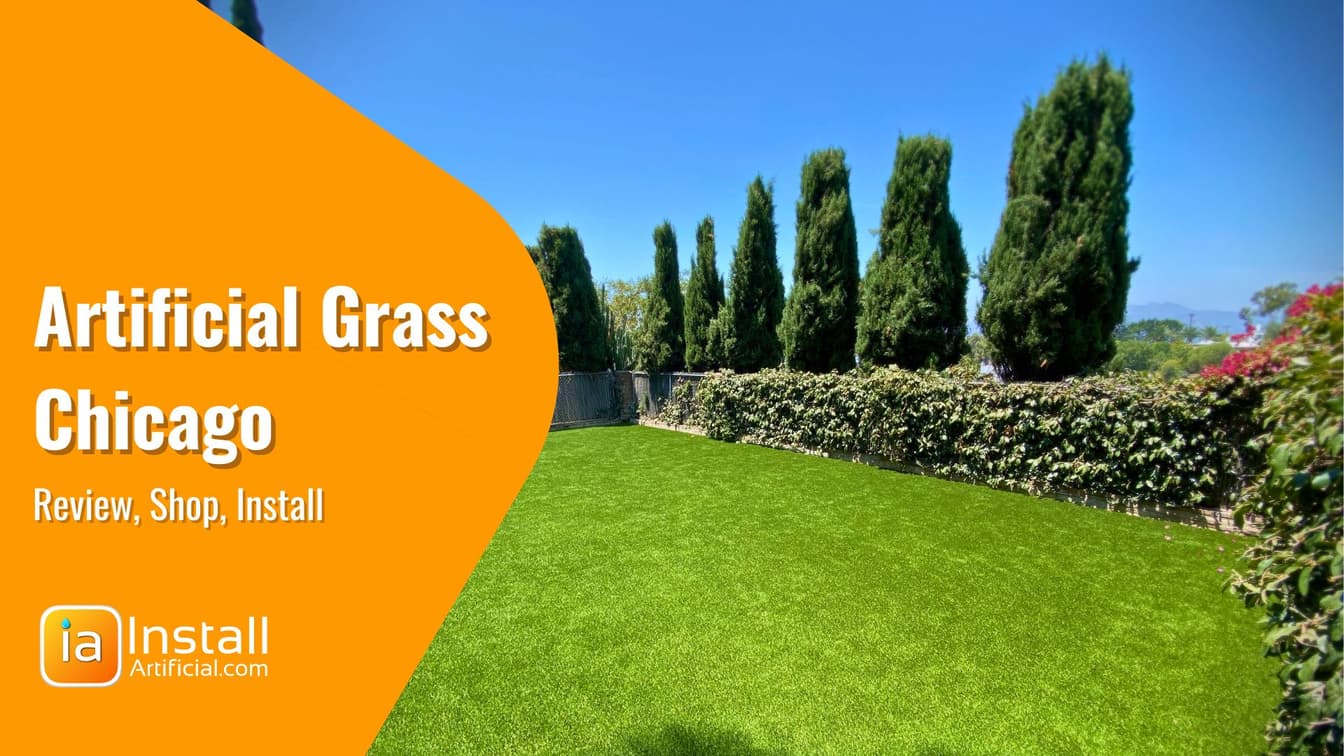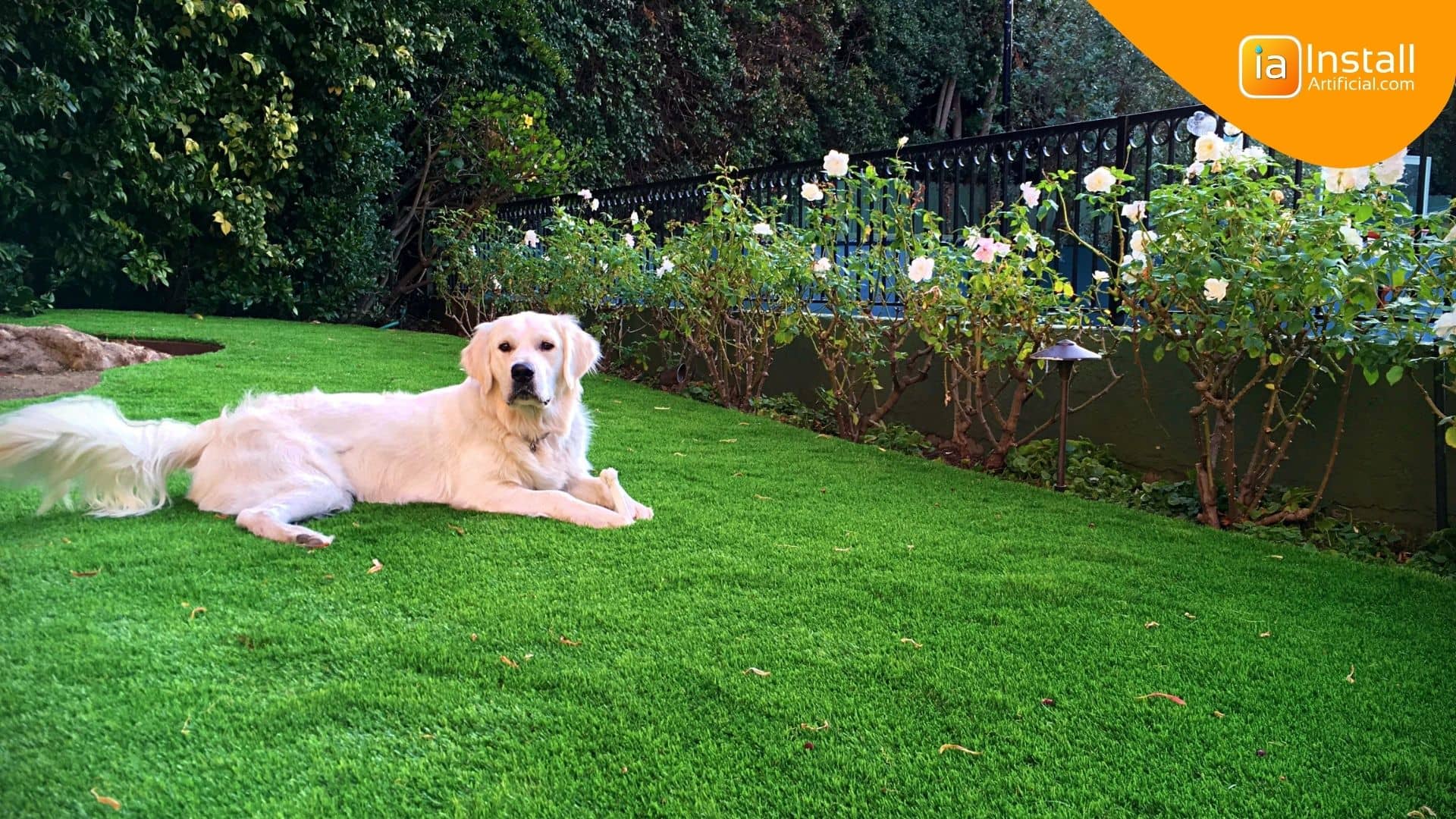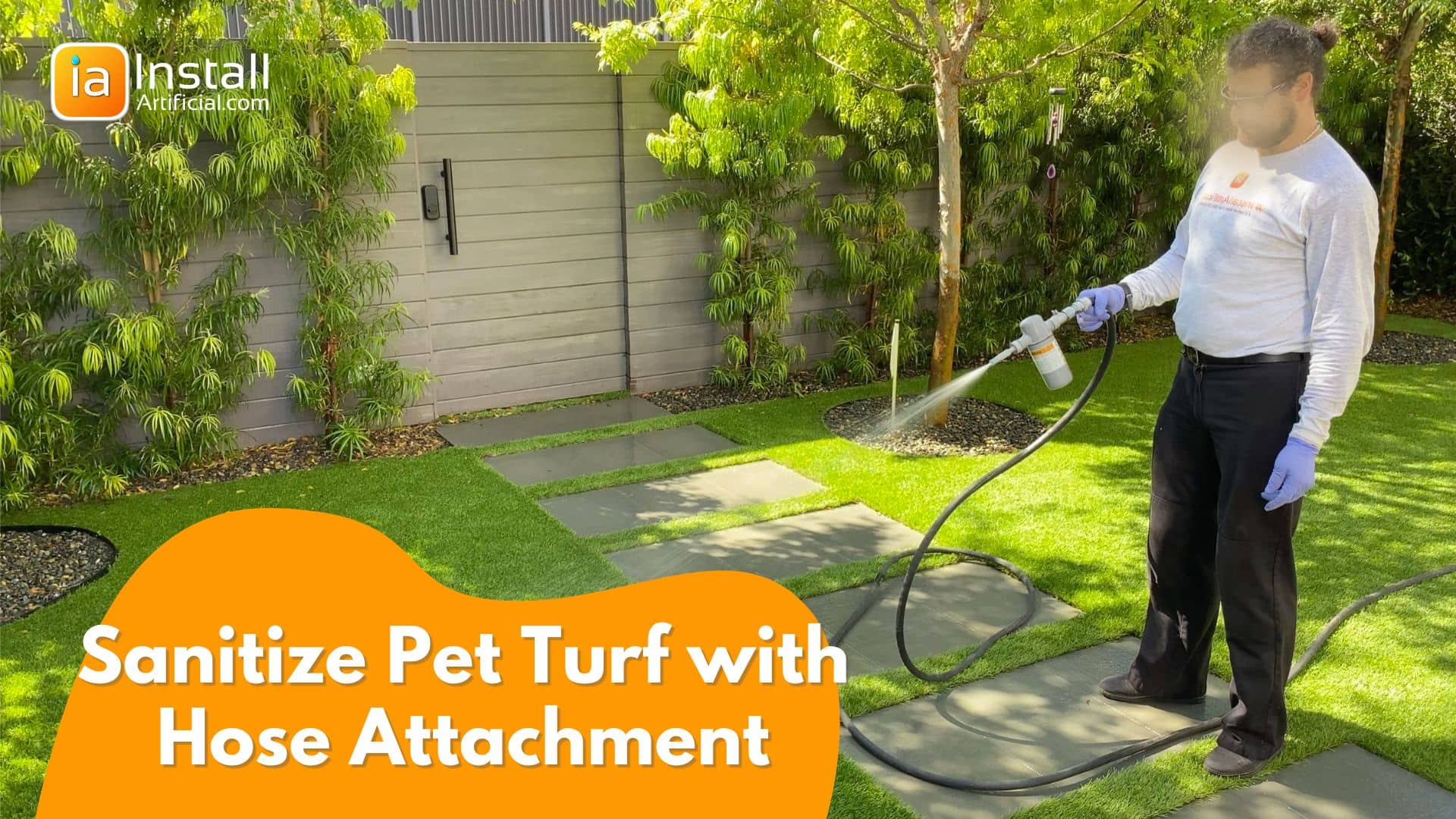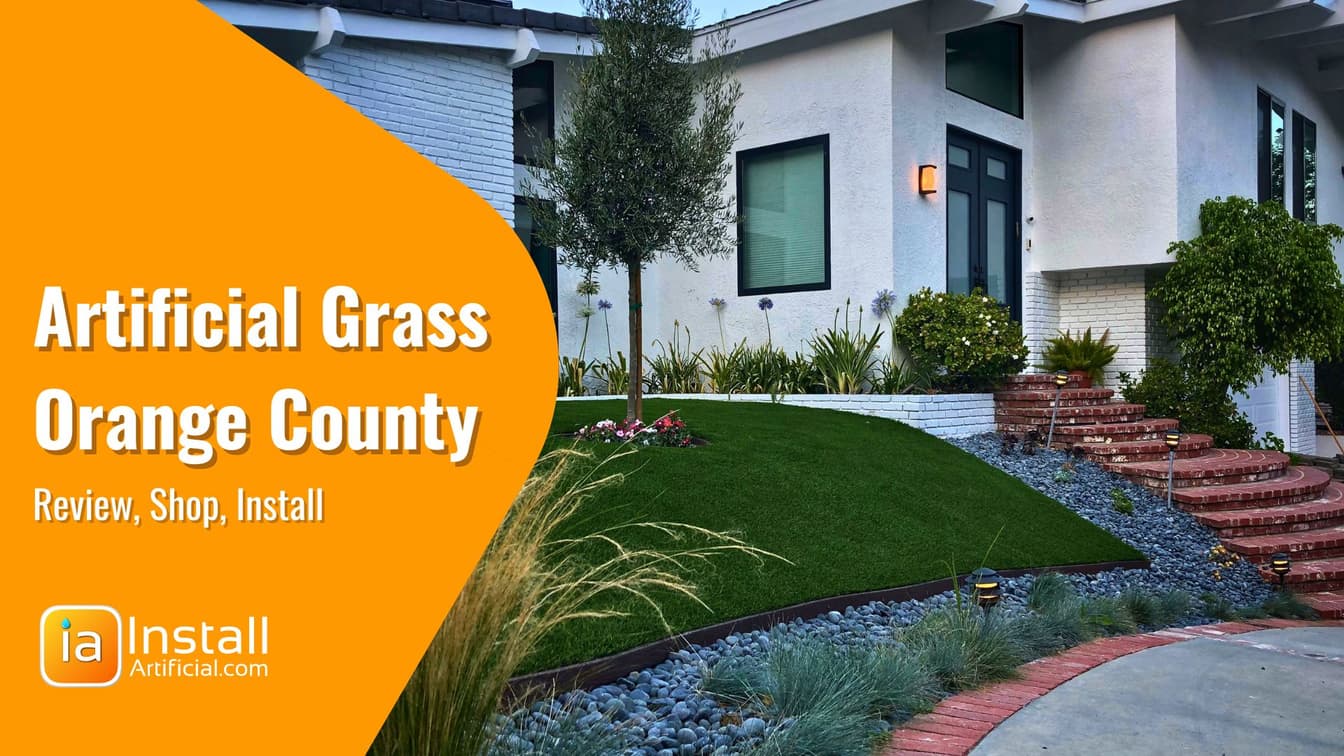
Pros and Cons of Artificial Grass for Dogs
It's becoming more common among homeowners to install artificial pet turf in their yards and backyard dog-run areas. As with anything, there are both pros and cons to converting to artificial grass for pets. Find out if k9 pet turf is right for you below!
- Advantages of Artificial Pet Turf
- Disadvantages of Artificial Pet Turf
- What is the Best Artificial Turf for Dogs?
- Commonly Asked Questions About Artificial Grass for Dogs
Advantages of Artificial Pet turf
Artificial Grass for Dogs is Durable & Dig-Proof
Our pet-friendly artificial grass is the perfect solution for pet owners seeking a low-maintenance and durable surface for their furry friends to play on. Our synthetic turf is designed to be extremely durable and wear-and-tear resistant, making it ideal for daily activities such as digging, scratching, and running. Unlike natural grass, which can easily be damaged by pets' playful antics, our artificial turf is built to withstand heavy use without becoming destroyed or detached. You can have peace of mind knowing that our pet turf is made to last, so it stands up to the daily demands of your pets without showing signs of wear and tear. With our pet-friendly artificial grass, you can provide your pets with a strong and resilient surface that will keep them entertained and comfortable for years to come.
Artificial Pet Turf is Clean & Attractive
With pet artificial turf, you'll no longer have to worry about mud or dirt patches on your lawn. That means your pup won't be tracking it into your house either! You'll have a beautiful green lawn that won't be compromised by your dogs or the weather. Artificial grass is clean, green, and full year-round, no matter the season.

Pet Turf Saves on Water Bills
Converting from natural grass to artificial turf is a great way to save on water usage. Not only is this cost-effective, but you're also doing your part to conserve a valuable resource that is often wasted in large amounts during lawn care.
Artificial Grass Requires Less Lawn Maintenance
You can remove the need for consistent mowing, seeding, and fertilizing by installing artificial turf for dogs. Most don't realize the amount of time and money proper lawn care requires, and often you're still not happy with the end result or it's ruined by your dogs. With pet-friendly turf, you won't have to worry about all the upkeep that comes with maintaining a natural lawn.
Artificial Turf for Dogs is Bug & Allergy-Free
Removing soil and applying a compacted base prior to artificial grass installation will remove the food source for insects and pests. They'll begin migrating to look for a food source elsewhere. Also, allergens found in natural grass will no longer be a factor. Prevent itchiness, watery eyes, sneezing, or other annoyances for the entire family!
Disadvantages of Artificial Pet Turf
Pet Turf Can Get Hot
Artificial grass is made of various types of plastic, so it will become warm under direct sunlight on high-temperature days. This is probably the biggest disadvantage of artificial grass. While it doesn't get hot enough to burn you, it can cause discomfort in the mid-day heat.
The best way to keep artificial grass cool is to choose a less dense and short pet turf that allows for more airflow throughout the blades. You can also provide more shade by planting trees or installing awnings. A simple rinse down of the surface can also drop temperatures dramatically!
Artificial Grass for Pets Will Smell if Not Cleaned
Another factor to consider before switching to artificial turf for pets is that to keep pet turf in good condition, you will need to consistently rinse and sanitize the surface. If urine is allowed to sit beneath the surface it will quickly cause odor and bacteria growth will occur.
The good thing is, there are cleansers that can simply be attached to the hose and sprayed directly onto the surface. A quick flush and rinse down with this sanitizer a few times a week will prevent odor from happening. While synthetic pet turf does require more maintenance than regular artificial grass, it's still much less than the requirements of maintaining a natural lawn.

Artificial Turf for Dogs Requires a Large Upfront Investment
While the ROI of artificial grass can be seen fairly quickly when you consider all the money you're saving on lawn care, pet turf installation does require a larger initial investment than most other ground cover options for pets. On average, the price of pet turf installation will range from $11-$16 per sq. ft. depending on location, accessibility, and materials used.
What is the Best Artificial turf for dogs?
Low-Density Turf
Artificial grass for pet areas should ideally be lower density. Low-density artificial grass will allow for quicker water percolation ensuring that liquids aren't trapped on the surface. This is especially important in areas where pets will be using the bathroom because consistent rinsing and sanitizing will be required.
Short Artificial Grass
Artificial pet turf is typically shorter than regular artificial grass. This is to allow for easier and faster cleaning practices. Short synthetic grass is also typically better at staying upright for longer in comparison to tall artificial grass which becomes matted down much quicker. You can still use plush and tall artificial grass in areas where pets will be present, but keep in mind this will require morning cleaning and upkeep and prevent odor.
Wear and Tear Resistant Synthetic Turf
In pet-specific areas, choose artificial turf that has a durable or ribbed blade shape. Soft and pliable artificial grass will not hold up to wear and tear over time.
You can find the most popular and long-lasting pet turf materials on our online synthetic turf store. See performance results for each artificial grass such as temperature, recovery rate, and wear and tear resistance to find the best artificial turf for dogs. Order samples to compare your favorites and have artificial grass shipped directly to you!
Other Pet Turf Materials Recommended for Odor Prevention
- Antibacterial Sand Infill
- Artificial Turf Deodorizer
- Drainage Layer for Artificial Grass
To learn more about recommended systems for pet turf, check out more of our publications on the knowledge base!
Commonly Asked Questions About Artificial Grass for Dogs
Is Artificial Grass Safe for Pets?
Artificial turf is absolutely safe for dogs and other pets! Turf is designed with durability in mind and can often be safer for dogs than sod. Most artificial pet grasses are made of poly, which is the same plastic that can be found in children's toys and other household items. Make sure you're purchasing from a reputable and trusted US supplier that only offers lead-free turf materials.
What is the Difference Between Artificial Grass and Pet Turf?
All artificial grass is pet-friendly and can be paired with a pet turf system. There are grasses, however, that are specifically designed for pets that wouldn't necessarily be ideal in a regular landscaping situation. These artificial grasses are short, stiff, and designed to withstand heavy amounts of wear and tear. Pet-specific turf is typically ideal in spaces where multiple dogs are present such as doggie daycares, commercial dog parks, and dog runs.
How Do I Stop my Pet Turf From Smelling?
To remove pet odor from artificial grass, you'll want to apply a heavy flow of water to flush out the area and use a sanitizing agent to remove bacteria. You can purchase hose attachments for sanitizing and use a water and vinegar mixture for light cleaning.
For the best odor-preventing results, opt for a full pet turf package that includes an antibacterial infill, turf deodorizer, and a drainage layer. This in conjunction with consistent rinsing will keep your lawn fresh. Once an artificial lawn is severely compromised with pet odor, it can be nearly impossible to correct so make sure you're taking care of your investment!
Is Pet Turf Worth It?
If taken care of, artificial pet turf will provide you with a clean and safe space for your dogs to enjoy for many years. Its durability and long lifespan are unmatched by any other ground cover alternative. However, artificial grass for pets must be consistently rinsed and sanitized. If that's not a commitment you're ready to make, it may not be right for you.
How Much Does Artificial Pet Turf Cost?
Depending on the pet grass selected, turf material for pets can range anywhere from $2.70-5.60 per sq. ft. Artificial pet turf installation will cost between $11-16 per sq. ft. on average.
Now that you've seen the benefits and downfalls of artificial grass for pets, you can make an educated decision on whether or not pet turf is right for your and your pup! When taken care of, k9 turf will last for years. Ready to get your project started? Request a custom estimate below!
How Long Does Artificial Turf Typically Last?
Artificial turf can provide a durable and low-maintenance lawn option, but how long does it really last? Generally, artificial turf has a lifespan of 8 to 15 years, depending on the quality of the materials and the level of care it receives.
Here's what you need to consider:
-
Quality of Materials: The durability of artificial turf heavily relies on the quality of materials used. High-end turfs from top brands made in the US may tend to hold up longer than cheaper alternatives. Cheap turf backings, when facing urine and chemical treatments, may fall apart within 1 year or less.
-
Installation: Proper installation is crucial. Incorrect installation can lead to issues such as weeds and uneven surfaces, which might shorten the turf's lifespan. A thin drainage layer leads to bacteria infestation and can lead to pet turf replacement 1 year after installation. Usually this happens in spring, after bacteria, stuck underneath the backing explodes in growth.
-
Usage: High-traffic areas, like sports fields, might see a shorter lifespan due to more wear and tear compared to residential lawns. When pet turf is matted down, it traps more bacteria in the blades and requires cleaning with sanitization much more often.
-
Maintenance: Regular maintenance, such as brushing and cleaning, can help extend the life of your artificial grass. However, it also wears out turf blades that split and curl. There has to be a healthy balance between how ofter the turf is cleaned.
Moreover, many manufacturers offer 15-year or lifetime (bullsh..t) warranties. However, note that most of those warranties do not cover turf use. To maximize your investment, select a high-quality permeable product that is designed for dogs, and engage a professional for installation and maintenance.
If you want to save money on pet turf installation, DO NOT INSTALL PET TURF. Soil hauling is not cheap. Labor is expensive. With cheap materials and insufficient drainage, you will throw away your money.
How Does Artificial Turf for Dogs Compare in Cost to Natural Sod?
If you are asking yourself this question, you are lucky! Most natural lawns do not survive playful dogs activity and urine. We are not replacing plush green lawns. We cover mud and trenches and mostly work at backyards that look like war zones. But for the matter of question, I will list a few items for your consideration.
Initial Investment
The upfront expense of installing artificial turf is notably higher than that of natural sod. This is primarily due to the materials and labor involved in laying down synthetic grass, which can be significant. If you're looking at the initial costs alone, sod is the more budget-friendly choice.
Long-Term Savings
However, the story doesn’t end there. Over time (if you did not install cheap imported material over soil or a thin layer of DG), artificial turf might actually save you money. Unlike natural grass, synthetic turf doesn’t require regular watering, fertilizing, or mowing, but it requires regular cleaning. This can lead to substantial savings on cleaning your house from mud, replacing sod, keeping your backyard closed, and converting your house into a condo.
Durability and Longevity
Artificial turf is designed to withstand wear and tear, and it can last for many years without needing replacement (if you do not flush, it will smell). This durability means you won't need to re-sod areas damaged by digging activity, which can be an added expense with natural grass.
Conclusion
Look, artificial grass is not cheap and it requires maintenance. If you think that it will solve your cleaning problems, it will not, you will still have to rinse turf and pick up after your dog. However, if your yard is messy and natural turf is dead, then artificial grass can bring your backyard in order again. And you will be able to use your backyard year-round.
How Does Artificial Turf Drainage Compare to Natural Grass?
When considering the switch from natural grass to artificial turf, it's important to understand how each manages water.
Natural Grass Drainage: Natural grass has its own built-in drainage system. Its permeable surface allows rainwater to naturally seep through the soil below. This helps to prevent water from pooling on the surface, though excessive rainfall can sometimes lead to temporary flooding.
Artificial Turf Drainage: Artificial turf, on the other hand, doesn't naturally absorb water like grass. To effectively manage rainfall and prevent water accumulation, artificial turf requires a specially engineered drainage system ( 2-3 inches of permeable base). This usually involves installing a base layer of materials such as crushed stone beneath the turf, which allows water to percolate through.
Key Points to Consider:
- Installation Requirements: Artificial turf Installation involves a drainage layer to facilitate water flow. This can ensure efficient drainage exceeding the rates to natural lawns.
- Maintenance: Unlike natural grass, artificial turf won't develop muddy patches or require reseeding.
- Performance in Heavy Rain: Properly installed drainage systems ensure that artificial turf performs well even under conditions of heavy rainfall, often providing an advantage over natural grass that may struggle with waterlogged conditions.
In summary, while natural grass relies on the soil's permeability, artificial turf necessitates a constructed drainage solution. Done correctly, artificial turf drainage can be much more effective than a natural lawn.
Understanding Artificial Turf
Artificial turf is a man-made surface crafted from synthetic fibers that mimic the appearance and texture of natural grass. It's become a popular option among homeowners. With artificial turf, there's no need for regular mowing, watering, or fertilizing, making it an attractive solution for individuals looking to simplify yard care.
Features of Artificial Turf
- Pet-Friendly Options: Some manufacturers offer specialized turf designed for pets, incorporating features like superior drainage systems to be soak sanitizers. These designs often include antimicrobial elements and permeable backings to help maintain cleanliness and hygiene.
- General Use: Even if you don't opt for a pet-specific product, most artificial turf can handle the wear and tear from dogs, making it a versatile choice for pet owners.




